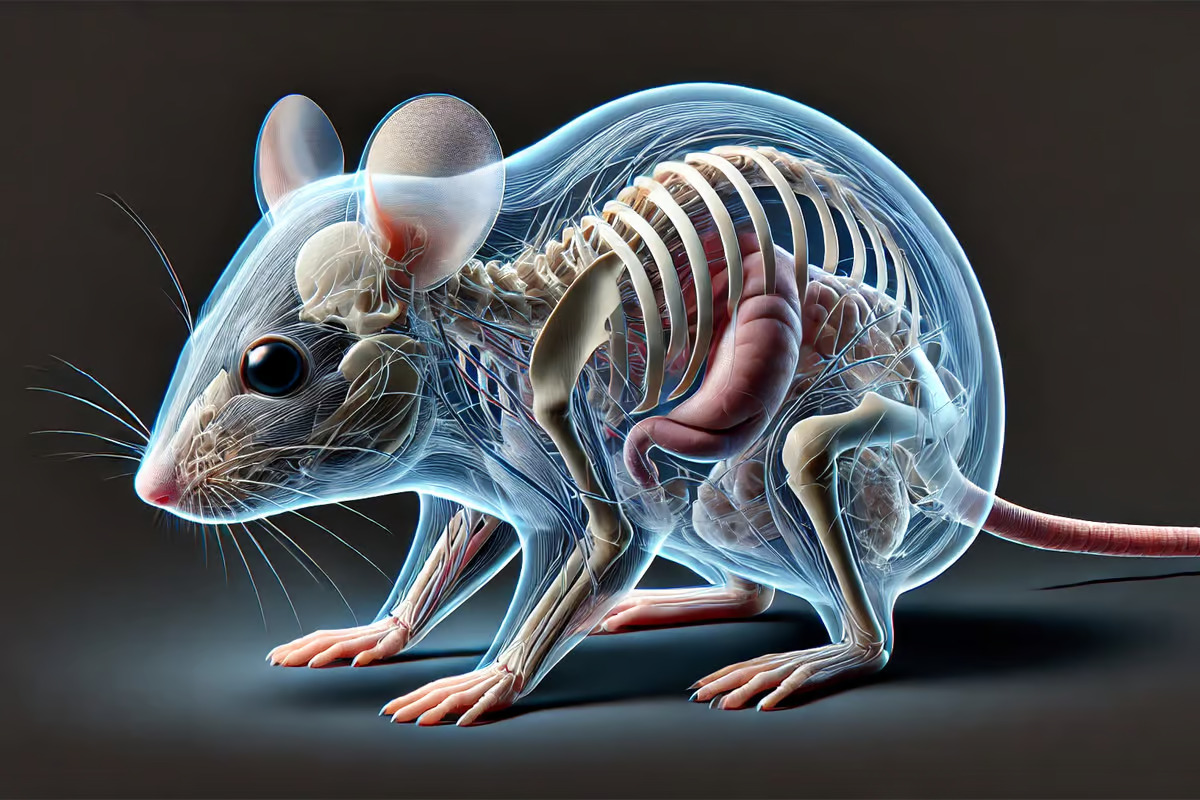 The dye that gives foods, drugs, and cosmetics a lemon yellow color can also make mice transparent, as illustrated in this generative image. –
The dye that gives foods, drugs, and cosmetics a lemon yellow color can also make mice transparent, as illustrated in this generative image. –
While scientists have ways to peer deeply into the tissues and bodies of humans and other animals, most of those techniques can only be carried out through biopsy procedures or after the subject being studied is dead. Being able to look inside a creature that is alive offers scientists another tool to analyze biological functions and advance their research. It can also be a more humane way to carry out research that doesn’t involve the pain or death of animal subjects.
One of the issues with trying to look through the skin of a living animal is that the protein and fat-based components of its skin are very good at scattering light. This effectively makes their skin opaque. However, the Stamford researchers discovered that the application of tartrazine, a food dye more popularly known as FD&C Yellow 5, tamed this scattering effect. Specifically, the dye was found to absorb light in the near ultraviolet and blue part of the spectrum, which allowed red and orange light to penetrate deeper into the tissue of mice. This basically turned their skin transparent, an effect that easily reversed once the dye was washed away.
The researchers applied the dye to the abdomen of mice and were able to watch neurons that they had tagged with fluorescent markers working in real time to reveal the gut motility in the rodents. Such a technique could help gain better insights into digestive issues such as IBS. The team also applied the dye to skulls of the mice, which allowed them to see the workings of cerebral blood vessels, and to the hindlimbs of the rodents, which made the operation of their musculature visible.
“Our approach … presents opportunities for visualizing the structure, activity, and functions of deep-seated tissues and organs without the need for surgical removal or the replacement of overlying tissues with transparent windows,” write the researchers about their findings.
The discovery may also expand the types of animals that scientists use to conduct research. Writing about the study in the journal Science, Christopher J. Rowlands and Jon Gorecki – two researchers not involved in the study – point out that zebrafish and nematodes are often selected for studies because they already have transparent skin that allows researchers to view their internal processes. However, with the new dye-based procedures, nearly any animal can become temporarily transparent to give researchers a peek inside.
Rowlands and Gorecki also point out the significance of the finding.
“On the basis of (these) results,” they write, “it is reasonable to expect 10-fold imaging-depth improvement given adequate dye penetration. With this, feats such as multiphoton imaging across a whole mouse brain or locating tumors around blood vessels beneath centimeter-thick tissues with optical coherence tomography catheters may become possible.”
The study has been published in the journal Science.
Source: American Association for the Advancement of Science via EurekAlert
–
























